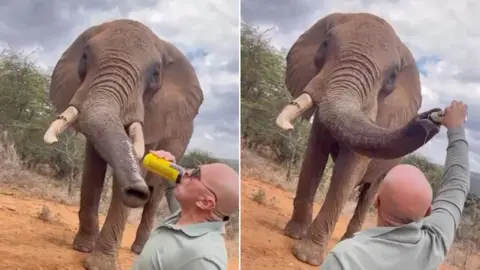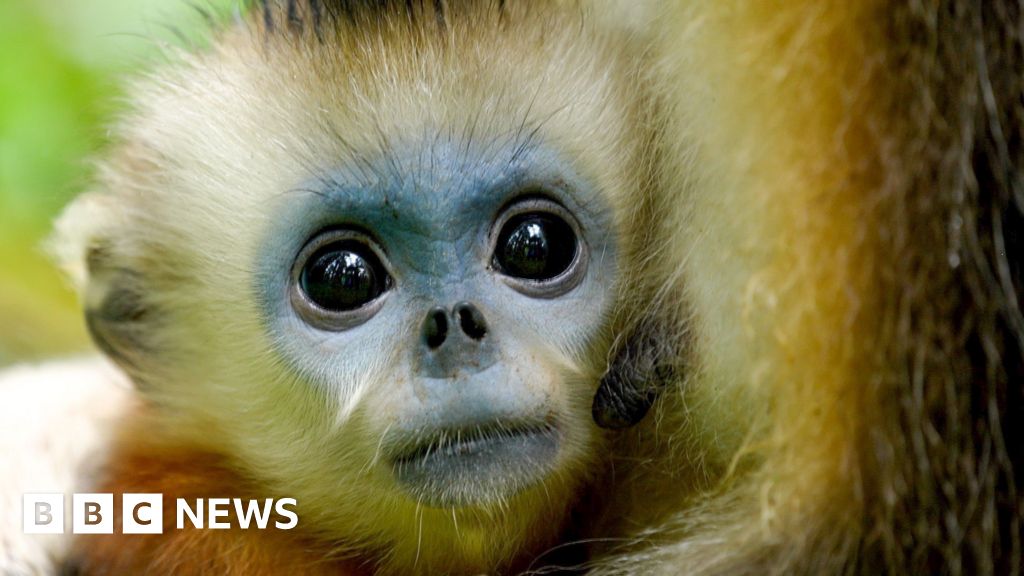South African scientists have unveiled a groundbreaking method to combat rhino poaching: injecting rhino horns with a harmless radioactive material. Spearheaded by the University of the Witwatersrand, this initiative dubbed the Rhisotope Project aims to assist customs officers in identifying smuggled rhino horns as they move globally. With the largest rhino population in the world, South Africa faces severe poaching challenges, with hundreds of rhinos killed each year for their horns, which are prized in traditional medicine and as status symbols in various cultures, particularly in Asia.
The project, which has invested approximately £220,000 ($290,000) over six years, relies on innovative technology to ensure the safety of the rhinos during the process. James Larkin, a professor involved in the project, emphasized its proactive potential: "At least one animal a day is still being poached. This is a significant tool to help reduce poaching numbers." Initial studies with 20 rhinos confirmed that the radioactive materials used were entirely safe for the animals.
Collaborating with the International Atomic Energy Agency, researchers have demonstrated that the technology allows horns to be detected even within fully packed 40-foot shipping containers, which strengthens law enforcement's ability to track illegal trade routes. Jamie Joseph, a vocal advocate for rhino conservation, highlighted the initiative's potential, noting, "It's not the endgame—better legislation and political will are crucial. But this tool will undoubtedly disrupt the illegal flow of rhino horns."
Annually, over 400 rhinos have fallen victim to poaching in South Africa, as reported by the conservation charity Save the Rhino. Jessica Babich, the head of the Rhisotope Project, expressed a broader vision: "Our goal is to deploy this technology at scale to protect one of Africa's most iconic species and thus safeguard a vital part of our natural heritage." With white rhinos classified as threatened and black rhinos critically endangered, the urgency to protect these animals is more crucial now than ever.
The project, which has invested approximately £220,000 ($290,000) over six years, relies on innovative technology to ensure the safety of the rhinos during the process. James Larkin, a professor involved in the project, emphasized its proactive potential: "At least one animal a day is still being poached. This is a significant tool to help reduce poaching numbers." Initial studies with 20 rhinos confirmed that the radioactive materials used were entirely safe for the animals.
Collaborating with the International Atomic Energy Agency, researchers have demonstrated that the technology allows horns to be detected even within fully packed 40-foot shipping containers, which strengthens law enforcement's ability to track illegal trade routes. Jamie Joseph, a vocal advocate for rhino conservation, highlighted the initiative's potential, noting, "It's not the endgame—better legislation and political will are crucial. But this tool will undoubtedly disrupt the illegal flow of rhino horns."
Annually, over 400 rhinos have fallen victim to poaching in South Africa, as reported by the conservation charity Save the Rhino. Jessica Babich, the head of the Rhisotope Project, expressed a broader vision: "Our goal is to deploy this technology at scale to protect one of Africa's most iconic species and thus safeguard a vital part of our natural heritage." With white rhinos classified as threatened and black rhinos critically endangered, the urgency to protect these animals is more crucial now than ever.


















